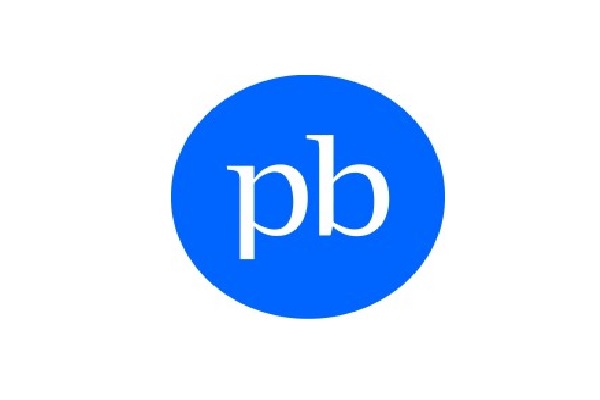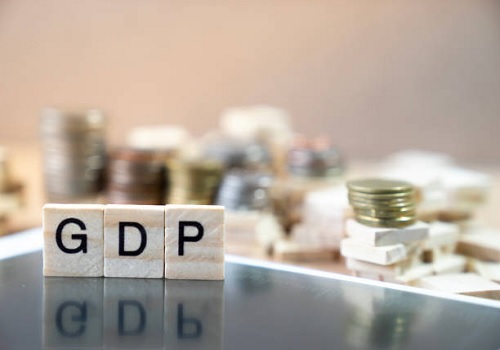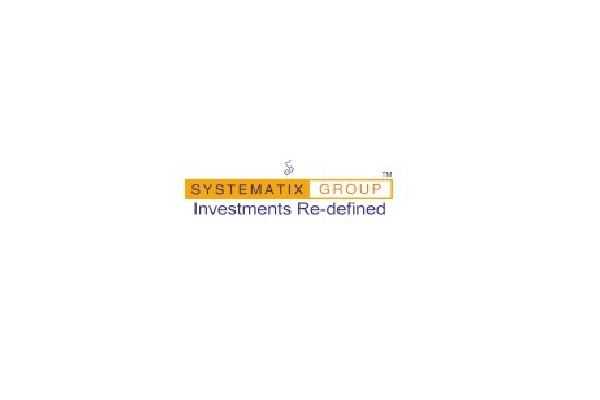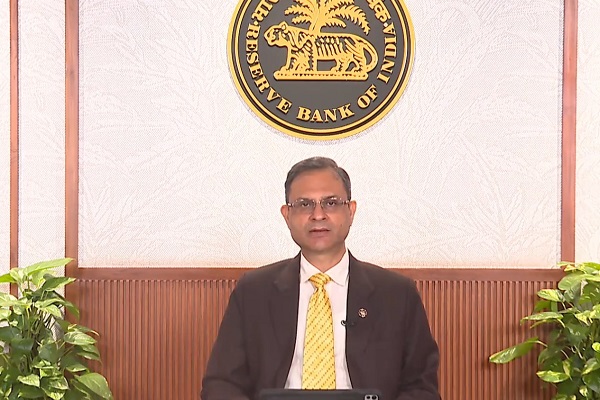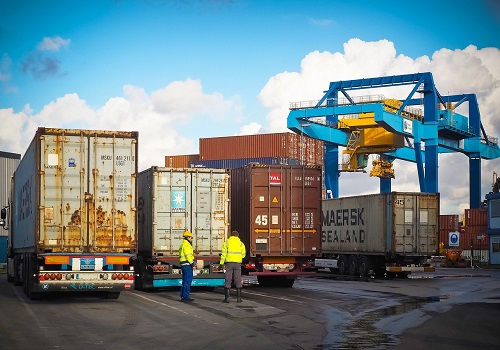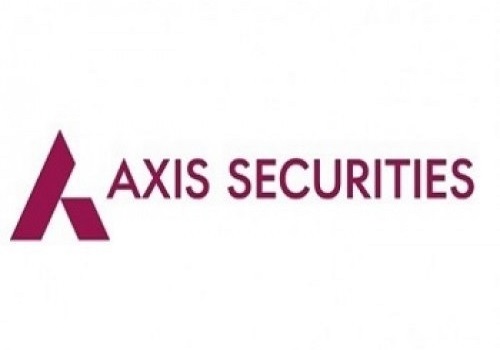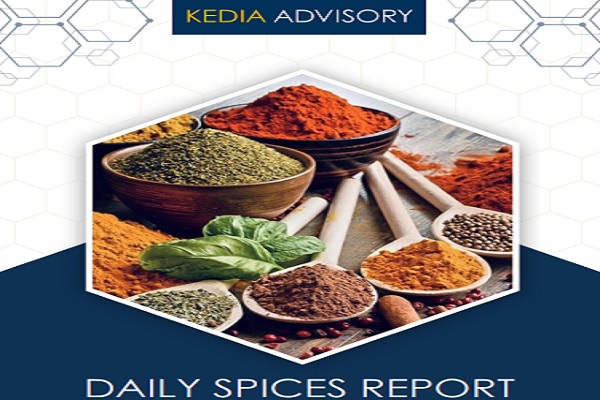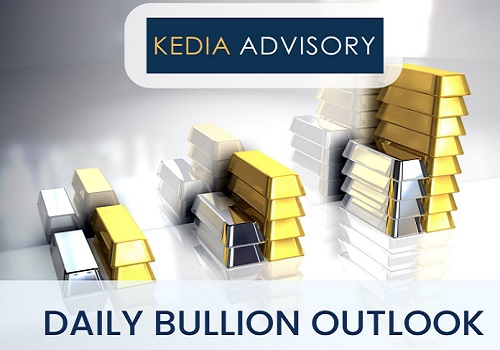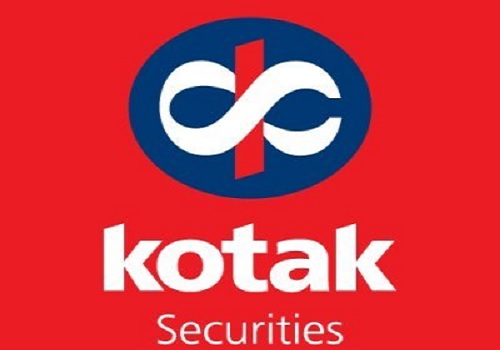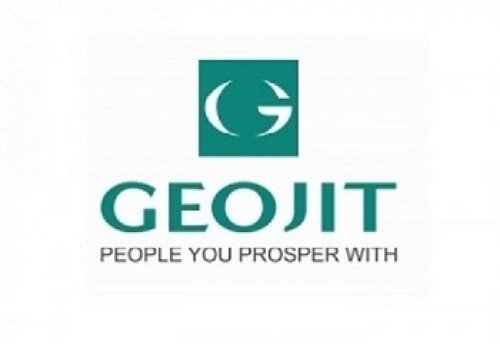Gold trading range for the day is 96385-98495 - Kedia Advisory

Gold
Gold ended lower by 0.58% at 97,211 as traders booked profits after the latest US Consumer Price Index (CPI) report tempered hopes of an imminent pivot in the Federal Reserve’s policy stance. The data, combined with fresh tariff announcements by US President Trump targeting 25 countries—including Canada, Mexico, the EU, and Brazil—kept investors on edge, reinforcing the safe-haven appeal of gold in the medium term but weighing on near-term sentiment. With the CME FedWatch Tool indicating a 59.9% probability of a rate cut in September, the market is adjusting to a continued hawkish tone in the short run, limiting immediate upside for bullion. bank activity remained a supportive factor, with net gold purchases of 20 tonnes in May led by Kazakhstan, Turkey, Poland, and Singapore, reflecting ongoing de-dollarization trends amid US economic and geopolitical uncertainty. On the physical side, Asian demand stayed muted due to price volatility and seasonal factors, although narrowing discounts in India point to tightening supplies. Chinese premiums held steady between $10–$25 an ounce, while Indian discounts narrowed to $8 an ounce from $14 last week. Limited imports and lower scrap availability are underpinning this tighter supply situation. Technically, gold is under long liquidation with open interest falling 7.01% to 10,720 lots while prices slipped 564. Immediate support is seen at 96,800, below which prices may test 96,385. Resistance is now pegged at 97,855, with a break above opening the door to 98,495.
Trading Ideas:
* Gold trading range for the day is 96385-98495.
* Gold dips on US CPI data and hopes of trade deals before the August deadline
* The US Consumer Price Index (CPI) rose to 2.7% (YoY) in June, with the core CPI at 2.9%.
* Uncertainty regarding US economic policy continued to hamper the US dollar.
Silver
Silver slipped by 1.28% to settle at 1,11,486, pressured by a stronger US dollar after the latest US inflation data came in close to expectations, slightly dampening hopes for aggressive Fed easing. Core CPI rose 0.2% month-on-month and 2.9% annually, just below forecasts, while headline inflation rose 0.3% month-on-month, in line with projections, but was marginally higher at 2.7% year-on-year. The data reinforced the view that the Fed may remain cautious, with traders now pricing in just over 50 basis points of cuts by year-end, though still reflect a consensus for rates to hold steady at the upcoming meeting. Despite short-term weakness, silver fundamentals remain robust. Silver ETFs attracted significant inflows of 39.25 billion in the June quarter, outpacing gold ETFs, while global silver ETP holdings climbed to 1.13 billion ounces by June 30—only 7% below their peak in February 2021. Retail investment in India rose by 7% year-on-year in the first half of 2025, supported by expectations of continued price strength. Imports soared 431% in May, contrasting with a drop in gold imports, underscoring strong physical interest. Industrial demand remains a key driver, with global fabrication forecast to grow 3% this year to surpass 700 Moz for the first time, mainly driven by green energy applications. Technically, silver is under long liquidation with open interest down 16.21% to 18,626 lots while prices dropped by 1,450. Immediate support is seen at 1,10,710, with further downside testing 1,09,940. Resistance is pegged at 1,12,595, and a breakout could push prices towards 1,13,710.
Trading Ideas:
* Silver trading range for the day is 109940-113710.
* Silver dropped as the dollar gained after U.S. June CPI data came close to forecasts.
* Core U.S. CPI rose 0.2% monthly and 2.9% annually, slightly below projections for both measures.
* Traders now price in just over 50 bps of Fed cuts by end-2025, fewer than before.
Crude oil
Crude oil settled down by 1.01% at 5,713, extending losses as traders grew doubtful that President Trump’s renewed pressure campaign on Russia would meaningfully disrupt its oil exports. Adding to the bearish tone, Kazakhstan reported an 11.6% year-on-year surge in oil output to nearly 50 million metric tons in the first half of 2025, with no intention of exiting the OPEC+ alliance, ensuring continued coordinated supply management. Despite this, OPEC’s latest monthly report struck a supportive note, keeping its global oil demand growth forecasts for 2025 and 2026 unchanged while highlighting stronger-than-expected economic performance in key consuming nations like India, China, and Brazil. The group remains optimistic that robust summer travel will sustain healthy refinery crude intake. However, the International Energy Agency recently trimmed its demand estimates but warned that the market may be tighter than perceived as refineries ramp up output to meet seasonal fuel needs. In the US, the Energy Information Administration’s weekly report painted a mixed picture. Crude inventories unexpectedly rose by 7.1 million barrels, defying market expectations of a draw, while gasoline and distillate stocks declined by 2.7 million and 825,000 barrels, respectively, signaling steady product demand. Technically, the market remains under long liquidation with open interest falling by 4.97% to 7,222 lots while prices slipped 58. Immediate support is seen at 5,674, below which crude could test 5,636. On the upside, resistance is likely at 5,760, with a break above opening room for a move towards 5,808.
Trading Ideas:
* Crudeoil trading range for the day is 5636-5808.
* Crude oil dips as traders doubt Trump’s Russia move will curb oil exports.
* Kazakhstan hikes oil output by 11.6% in first half, no plans to quit OPEC+
* OPEC said the global economy may perform better than expected in the second half of the year.
Natural Gas
Natural Gas ended higher by 1.23% at 303.3, extending gains as forecasts for persistently hotter-than-average weather conditions boosted sentiment for increased cooling demand through late July. The U.S. National Hurricane Center also flagged a developing tropical system near Florida with a 40% chance of becoming a cyclone as it moves toward the Gulf of Mexico, adding potential supply disruption risks that supported prices further. However, traders remain cautious due to strong fundamentals on the supply side. According to LSEG, gas output in the Lower 48 states averaged 106.9 bcfd so far in July, up from a record 106.4 bcfd in June, underscoring resilient production. Demand, including exports, is forecast to ease slightly next week from 107.8 bcfd to 106.8 bcfd as weather forecasts moderated slightly compared to earlier, hotter predictions. On the export front, flows to the eight major U.S. LNG plants rose to 15.8 bcfd so far in July, recovering from recent maintenance and unexpected outages but still under the record 16 bcfd seen in April. Meanwhile, U.S. utilities injected 53 bcf of gas into storage for the week ending July 4, matching the five-year average build and keeping total inventories at 3.006 tcf — about 6.1% above the five-year seasonal average, highlighting comfortable storage levels despite summer heat. Technically, the market is witnessing fresh buying as open interest rose by 0.25% to 18,339 while prices gained 3.7. Immediate support is at 295.6, below which prices may test 287.8. Resistance is seen at 307.8, with a break above opening the door for a move towards 312.2.
Trading Ideas:
* Naturalgas trading range for the day is 287.8-312.2.
* Natural gas prices eased as weather forecasts showed less intense heat for coming two weeks.
* U.S. National Hurricane Center sees 40% chance of tropical cyclone developing in Gulf region.
* Meteorologists expect weather to stay hotter than normal through July 30 but cooler than earlier.
Copper
Copper closed slightly higher by 0.18% at 884.05 as the market digested the implications of US President Trump’s announcement of a hefty 50% tariff on copper imports starting August 1. The policy aims to boost domestic refining and reduce reliance on overseas suppliers, but concerns remain over the feasibility given that the US still imports nearly half of its refined copper, with Chile, Canada, and Peru accounting for over 90% of these shipments. Goldman Sachs has forecasted that LME copper prices could ease modestly to around $9,550 per metric ton in August, citing that the market may still be underestimating the impact of the new tariffs. On the supply side, Chile’s Codelco reported a 9% year-on-year rise in output for H1 2025, with production at its El Teniente mine up by 14%, providing some relief amid tight global supply conditions. According to the International Copper Study Group, the refined copper market swung to a 50,000 metric ton deficit in April after recording a surplus in March, with strong consumption and warehouse stock shifts tightening supply. China’s copper imports showed resilience, climbing 8.7% in June despite an overall year-to-date decline, as traders moved stocks to the US in anticipation of tariffs. Technically, copper is witnessing short covering, with open interest dropping by 5.39% to 6,424 while prices gained 1.6. Immediate support is placed at 880.7, below which it could test 877.3. Resistance is now seen at 886.1, and a break above may open the door towards 888.1.
Trading Ideas:
* Copper trading range for the day is 877.3-888.1.
* Copper moved little as markets digested Trump’s 50% copper import tariff.
* Goldman Sachs cut its August LME copper price forecast to $9,550/t from $10,050/t on tariff impact.
* Goldman maintained its long COMEX-LME copper arbitrage trade, citing market underpricing of the 50% duty.
Zinc
Zinc closed lower by 0.68% at 256.4, pressured by mixed macro data from China and renewed tariff uncertainty from the U.S. Although China’s GDP grew 5.2% year-on-year in Q2 2025, slightly above expectations, concerns persist over weaker momentum in the second half as exports soften and domestic demand remains patchy. Investors are also assessing the impact of President Trump’s planned 30% tariff on imports from the EU and Mexico starting August 1, alongside a 50% tariff specifically targeting zinc imports, which has injected fresh volatility into the base metals complex. Weakness in China’s manufacturing sector continues to weigh heavily on zinc sentiment, with buyers limiting purchases to immediate needs amid subdued demand. Inventories tracked by the Shanghai Exchange rose sharply by 10.2% week-on-week, adding to oversupply fears in the near term. However, supply-side developments could cap the downside. Mined output at Teck Resources’ Red Dog Mine in Alaska, the world’s largest zinc mine, dropped 20% year-on-year in Q1 2025, while Australian smelter Nyrstar announced a 25% annual production cut due to unfavorable treatment charges driven by ore shortages. Globally, the zinc market surplus narrowed to 16,000 metric tons in April, down from 23,400 tons in March, as output disruptions trimmed supply. Technically, zinc is under long liquidation, with open interest down by 2.62% to 2,560 while prices slipped 1.75. Immediate support is at 255.2, with further downside towards 253.9 if breached. Resistance is seen at 257.6, and a move above could push prices to 258.7.
Trading Ideas:
* Zinc trading range for the day is 253.9-258.7.
* Zinc dropped as China’s economy slowed less than expected in the second quarter.
* China’s policy support and front-loaded exports cushioned growth, but weaker second-half outlook weighs on sentiment.
* Shanghai Futures Exchange zinc inventories rose sharply by 10.20% from last Friday, highlighting sluggish factory demand.
Aluminium
Aluminium closed lower by 0.36% at 248.45, weighed down by rising inventories and renewed global trade tensions that continue to cloud sentiment in the base metals market. Inventories in LME-approved warehouses increased significantly by 47,450 tons since June 25, reaching 384,350 tons, reversing the previous tightness in spot premiums. Similarly, stocks monitored by the Shanghai Exchange rose 9.1% week-on-week, highlighting comfortable near-term supply. China’s domestic production remains resilient despite some output cuts for capacity replacement projects. The country produced 3.81 million metric tons of aluminium in June, up 3.4% from last year, pushing total output in the first half of 2025 to 22.38 million tons, marking a 3.3% year-on-year growth. However, June output dipped 3.23% month-on-month as plants in Shandong curtailed operations to facilitate capacity swaps to new facilities in Yunnan. On the export front, China’s shipments of unwrought aluminium and aluminium products fell to 489,000 tonnes in June from 547,000 tonnes in May, reflecting subdued global demand. Japanese buyers have negotiated sharply lower premiums for Q3 shipments, dropping 41% from the previous quarter to $108 per metric ton, indicating ample supply and muted consumption outlook. Technically, the aluminium market is under long liquidation as open interest dropped by 7.26% to 2,824 lots while prices slipped 0.9. Support is firm at 247.9, with a break lower likely testing 247.3. On the upside, resistance is seen at 249.2, and a move above could extend gains towards 249.9 in the near term.
Trading Ideas:
* Aluminium trading range for the day is 247.3-249.9.
* Aluminium dropped pressure from rising available inventories in warehouses approved by LME.
* Pressure also seen amid renewed global trade tensions dampened risk appetite.
* Data in China showed that the economy slowed less than expected in the second quarter.
Cottoncandy
Cottoncandy edged higher by 0.97% to settle at 55,440 yesterday, recovering from earlier losses on the back of short covering. This rebound came despite a fundamentally bearish backdrop, with India’s closing stocks for the 2024–25 season estimated at 55.59 lakh bales—an 84% surge over last year’s 30.19 lakh bales, according to the Cotton Association of India (CAI). The CAI’s updated estimates peg the season’s total cotton pressing at 311.40 lakh bales, up from an earlier 301.14 lakh bales, driven by higher crop size in key states. Domestic cotton supply till end-June stood at 356.76 lakh bales, with consumption at 233.5 lakh bales and exports at a subdued 15.25 lakh bales. Notably, exports this season are projected to decline by nearly 40% from the previous year to just 17 lakh bales, reflecting weaker global demand for Indian cotton amid ample supplies. On the global front, the July U.S. cotton balance sheet showed higher production and ending stocks for 2025/26, with the crop forecast raised to 14.60 million bales. Likewise, world production is up by 1.43 million bales, mainly due to larger crops in China and the U.S., while global consumption also edged higher. Technically, Cottoncandy are in a short covering phase, with open interest steady at 65 while prices climbed by 530. Support lies at 54,770, and a break below could see a test of 54,100. On the upside, resistance is expected at 55,900, with a further move possibly testing 56,360.
Trading Ideas:
* Cottoncandy trading range for the day is 54100-56360.
* Cotton gains on short covering after prices dropped as 2024-25 closing stocks seen 84% higher at 55.59 lakh bales
* CAI cut consumption forecast by 8 lakh bales to 307 lakh for the 2024–25 season.
* Cotton exports expected to fall to 15 lakh bales, down 13.36 lakh from last year.
* In Rajkot, a major spot market, the price ended at 27411.8 Rupees dropped by -0.22 percent.
Turmeric
Turmeric settled higher by 0.62% at 13,552, rebounding on short covering after recent declines driven by expectations of increased acreage for the 2024–25 sowing season. Favourable rainfall has boosted planting sentiment, with estimates suggesting turmeric acreage could rise by 15–20% as farmers shift from other less profitable crops. Arrivals have edged higher to 13,660 quintals versus 11,940 quintals in the previous session, indicating steady market flow. However, the upside remains capped as concerns linger over production productivity—despite higher acreage, untimely rains and weather-related issues are expected to limit yields. In 2023–24, India produced about 10.75 lakh tonnes of turmeric. For the current season, yields are projected to be 10–15% lower, especially in the Nanded region, which has faced challenges like small rhizomes and crop rot. At the Duggirala market, strong buying interest for new crop arrivals continues to command a price premium over older stock, thanks to better quality. With about 50–55% of the new crop traded so far, robust trade volumes of 1,000–1,200 bags daily highlight sustained market activity even as the season nears its end. On the export front, turmeric shipments rose 6% in April 2025 year-on-year but slipped marginally by 0.92% from March, pointing to steady overseas interest. Technically, turmeric is seeing short covering, as open interest dipped by 0.34% to 17,465 lots while prices gained 84. Immediate support stands at 13,428, below which a test of 13,302 is likely. Resistance is pegged at 13,640, and a breakout could take prices towards 13,726.
Trading Ideas:
* Turmeric trading range for the day is 13302-13726.
* Turmeric gains on short covering after prices dropped due to expected increase in acreage.
* Turmeric acreage is expected to increase by 15-20% this season, supported by low competitive crop prices.
* In April 2025 around 14,956.80 tonnes were exported as against 14,109.10 tonnes in April 2024 showing a rise of 6%.
* In Nizamabad, a major spot market, the price ended at 14126.3 Rupees gained by 0.6 percent.
Jeera
Jeera closed marginally lower by 0.08% at 19,585 as weak domestic and export demand continued to weigh on prices post the peak retail season. Traders attribute the subdued sentiment largely to the slowdown in retail activity and tepid overseas buying interest, despite easing geopolitical concerns that could otherwise have supported Indian exports. Comfortable supply levels and adequate carry-forward stocks are adding further pressure, with nearly 20 lakh bags still with farmers. Out of this, only 3–4 lakh bags are expected to be traded before the season ends, leaving an estimated carry-forward stock of around 16 lakh bags. Production for the current season is likely to match last year’s levels owing to better crop conditions and favourable sowing, although a marginal drop is noted due to reduced acreage. Current estimates peg India’s cumin output at about 90–92 lakh bags this year, down from 1.10 crore bags last year. Gujarat is expected to contribute 42–45 lakh bags, while Rajasthan may yield 48–50 lakh bags. Global supply from other producing countries remains constrained due to adverse weather—China’s cumin production is now projected at 70–80 thousand tons, below earlier estimates. Syria, Turkey, and Afghanistan are expected to contribute limited volumes due to continued supply challenges. Technically, the market is under fresh selling as open interest surged 15.27% to 5,751 lots while prices dropped by 15. Jeera has immediate support at 19,530; below this, prices may test 19,460. Resistance is seen at 19,670, and a move above could push prices to 19,740.
Trading Ideas:
* Jeera trading range for the day is 19460-19740.
* Jeera dropped due to weak domestic and export demand post retail season.
* However downside seen limited on strong export demand and easing geopolitical concerns.
* Total arrivals witnessed a marginal increase to 12,000 bags (55 kg each) as against 11,800 bags on the previous day.
* In Unjha, a major spot market, the price ended at 19995.2 Rupees dropped by -0.61 percent.
Views express by all participants are for information & academic purpose only. Kindly read disclaimer before referring below views


